As an Amazon Associate I earn from qualifying purchases.
Cooking a goose, or goose meat in general, is not so hard as people seem to think. But it does present some challenges, no matter if you are buying goose at the store, or hunting them.
Canada geese, especially, get a bad rap. We all know this goose. It’s the one that chokes our parks, wanders around our neighborhoods and leaves great cylindrical snakes o’crap all over the place. Sky carp. Flying rats, Stinking, arrogant hissing birds that frighten children.
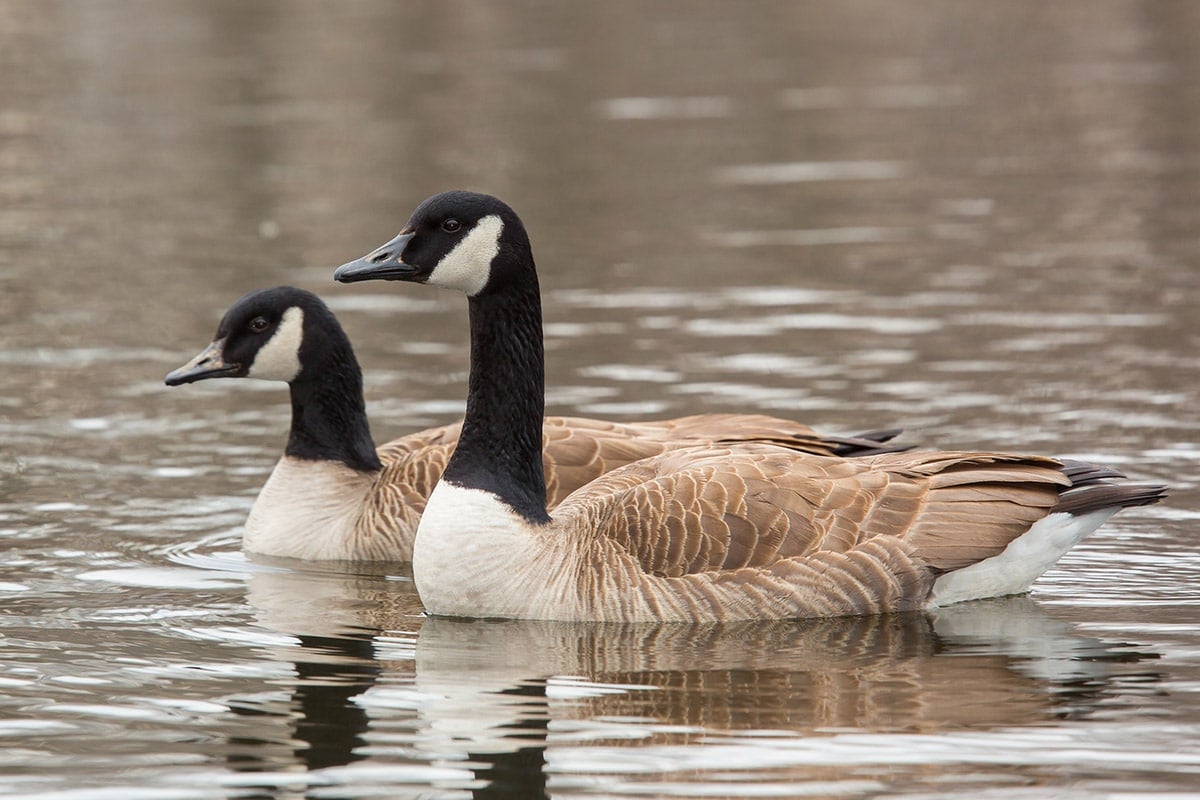
Yeah, Canadas can be all of these things. But in the right circumstances they — and all the other species of goose — can be wonderful at the table, in many ways better even than either a domestic goose or a wild specklebelly goose, which is known to those of us who hunt them as “the ribeye of the sky.”
OK, let’s start with a rundown of species, because the goose meat you cook will be different depending on it.
First, there will be the domesticated goose. These are primarily descendants of the European graylag goose, Anser anser, who is cousin to our whitefront or specklebelly goose, Anser albifrons. Another early place of domestication, Asia, worked with the native swan goose there.
More than 3000 years of domestication has altered domesticated geese significantly. They are larger and fatter than any wild goose. Their meat will be softer and less dense than wild ones. We’ll get to cooking farmed geese in a moment.
Here in North America, we primarily hunt Canada geese, snow geese and whitefronts. Emperor geese and the Atlantic and Pacific brants also fall into this mix.
I’ve written about eating snow geese extensively here, so I will refer you to that article if that’s what you are looking for. Short version: snow geese are one of my favorite sources of skinless goose meat.
Brants are easy: Skin them on the East Coast, pluck on Pacific. It’s diet related. Pacific brant eat eelgrass, which gives them wonderful white fat that is not at all fishy. Atlantic brant eat sea lettuce, a seaweed, and their fat stinks of low tide.
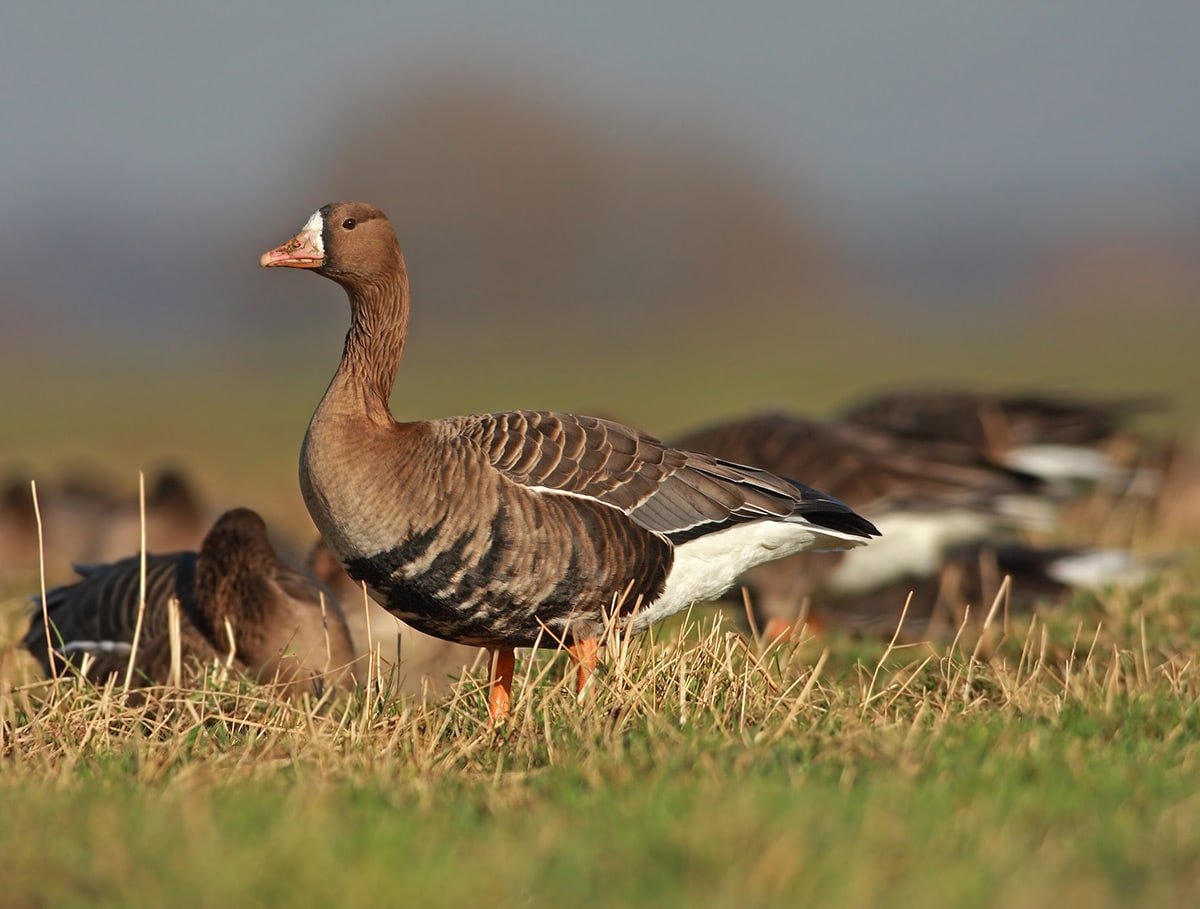
Whitefronts (specklebelly geese) are universally regarded as the finest wild goose for eating. They are mostly seed and grain eaters, and are always nice tasting.
That leaves Canada geese. All sorts of geese look like Canadas, from tiny Aleutian geese no larger than a mallard, to the Giant Canadas, which can reportedly top 20 pounds. That, my friends, is one big-ass goose. Most honkers weigh around 12 pounds, more or less.
Canada geese live lives like large mallards, which is why you see them sharing the same park ponds. Both birds will eat just about anything, but geese really dig grass, and yes, grain. How a Canada tastes depends on what that bird ate before you shot it. And because they are such eclectic eaters, it matters.
This is a universal truth: The quality of goose meat hinges on the bird’s diet, farmed or wild.
Plucking or Skinning
When it comes to cleaning geese, most of you will be working with store-bought birds. And while most are already plucked and gutted, you will still want to remove the giblets (often in a little bag in the cavity) and the bog blobs of fat in the cavity.
The fat you will want to render — here is my tutorial on how to render duck fat — and the giblets are great for a variety of recipes. I have an entire selection of goose giblets recipes here.
Those two things apply to wild geese, too, but you have to get there first. Plucking geese turns lots of people off. This is understandable: Once you start talking about an animal 12 pounds or larger, everything gets harder to deal with.
The feathers on a large Canada are tough to remove, and waxing one takes two full blocks of paraffin. God help you if you try to dry-pluck one. I only pluck Canada geese when I have only a few, or when I have many, only the ones that are not shot up. It’s work, but it’s worth it.
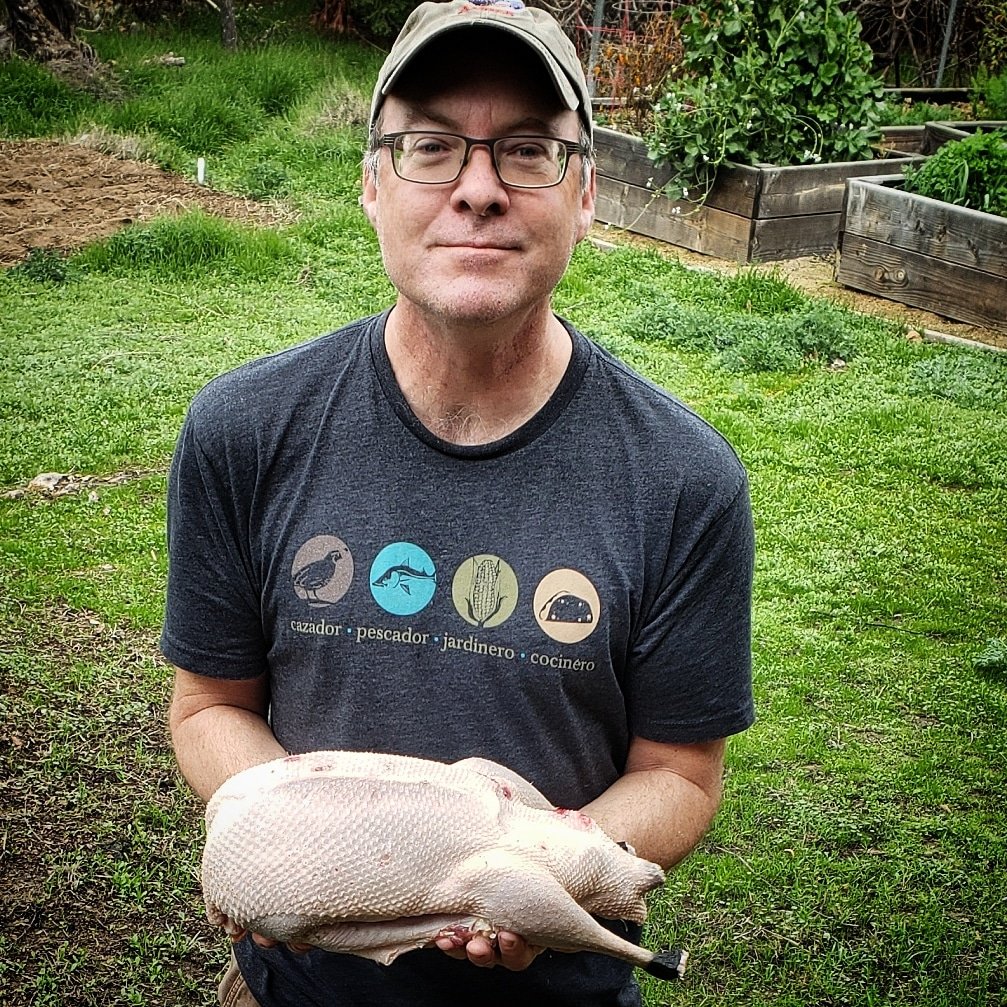
Plucking snow geese can be difficult, and I only do it when they are fat, which is rare. I always pluck whitefront geese and Pacific brant.
Cooking Goose Meat
Once you have your geese, now what?
Let’s start with those of you who have a whole, store-bough goose. Chances are you want to roast it whole for a special occasion. My advice is to use my recipe for roast goose on Simply Recipes. It is designed for farmed birds.
If you aren’t set on cooking a whole goose, my strong advice is to break it down, wild or farmed. The reason is because you want to cook goose breast no more than to about 135°F internal temperature, but goose legs need more time, about 165°F internal temperature. That’s impossible with a whole bird.
Here’s the shortcut: Always cook breast meat like steak, and legs and wings like brisket. The way you cook a goose is the way you cook beef. In the kitchen, they are not treated like birds.
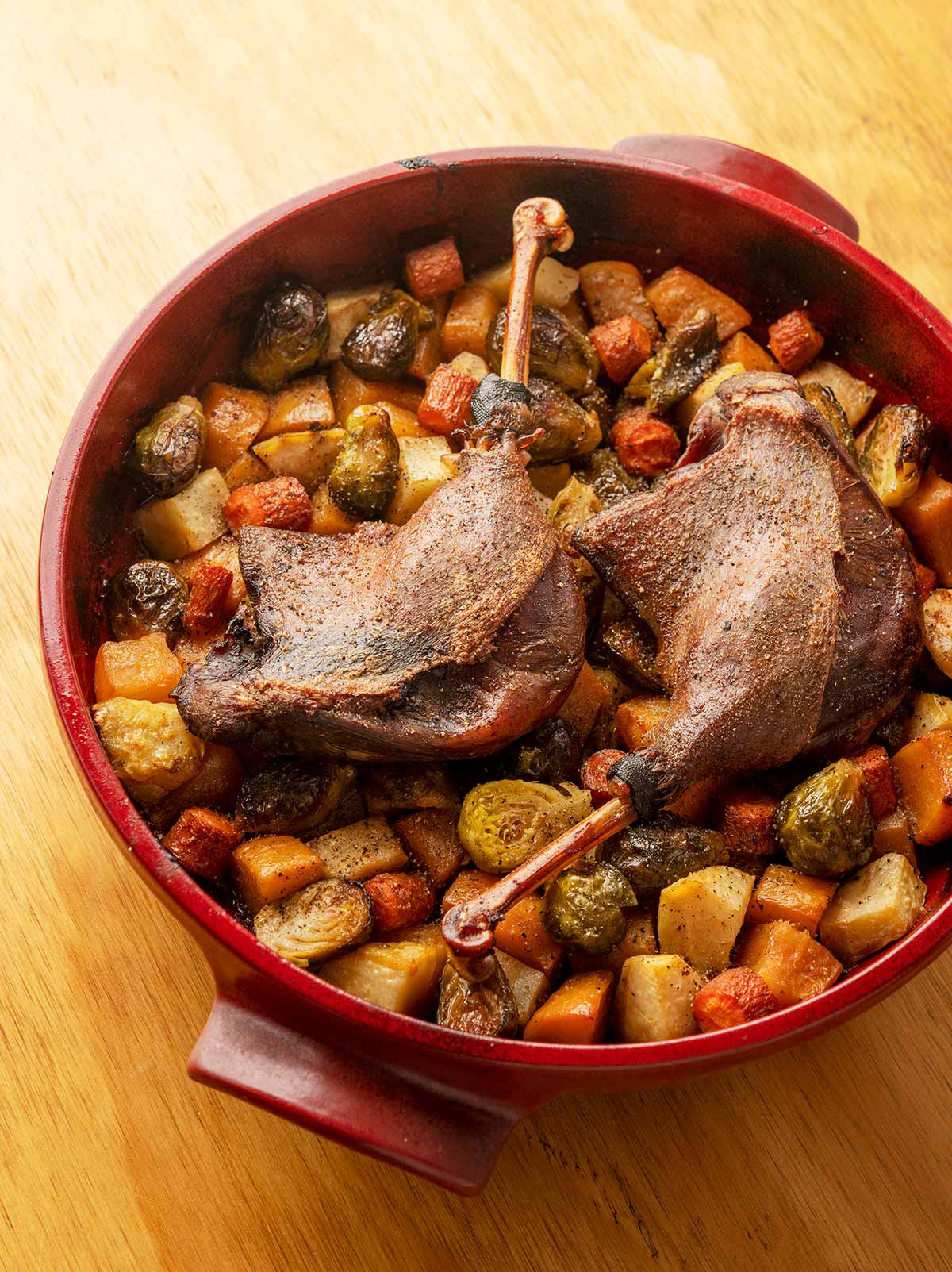
If you have straight up goose meat, which is what most hunters come home with — skinless, boneless breasts, and/or skinless legs — here are some options.
First off, know that goose meat is basically steak, from the equivalent of a really old cow. Geese can live beyond 30 years, and that’s an incredibly old bird. Its meat will be far tougher than a young goose. You never need worry about this with domesticated geese, because they are always less than a year old.
Goose meat, in my opinion, is 100 percent interchangeable with venison, and can be used in beef recipes, too. Common ways to deal with it include:
- Grinding goose meat with pork fat, bacon ends or beef fat for any ground meat dish you like, or to make homemade sausages.
- Slicing the breast meat thinly for goose jerky.
- Dicing, slicing or julienning goose breast for any Chinese stir fry that would normally use beef, like beef and broccoli.
- You can marinate goose meat like steak for fajitas.
- You can slice it lengthwise, so you have cutlets, for jagerschnitzel, goose parmesan, or goose tacos.
- Goose pastrami is a great way to eat Canada goose breasts.
If you have a fat, skin-on goose breast of any species, you can make a wonderful German smoked goose breast recipe I do when I am so lucky as to have them.
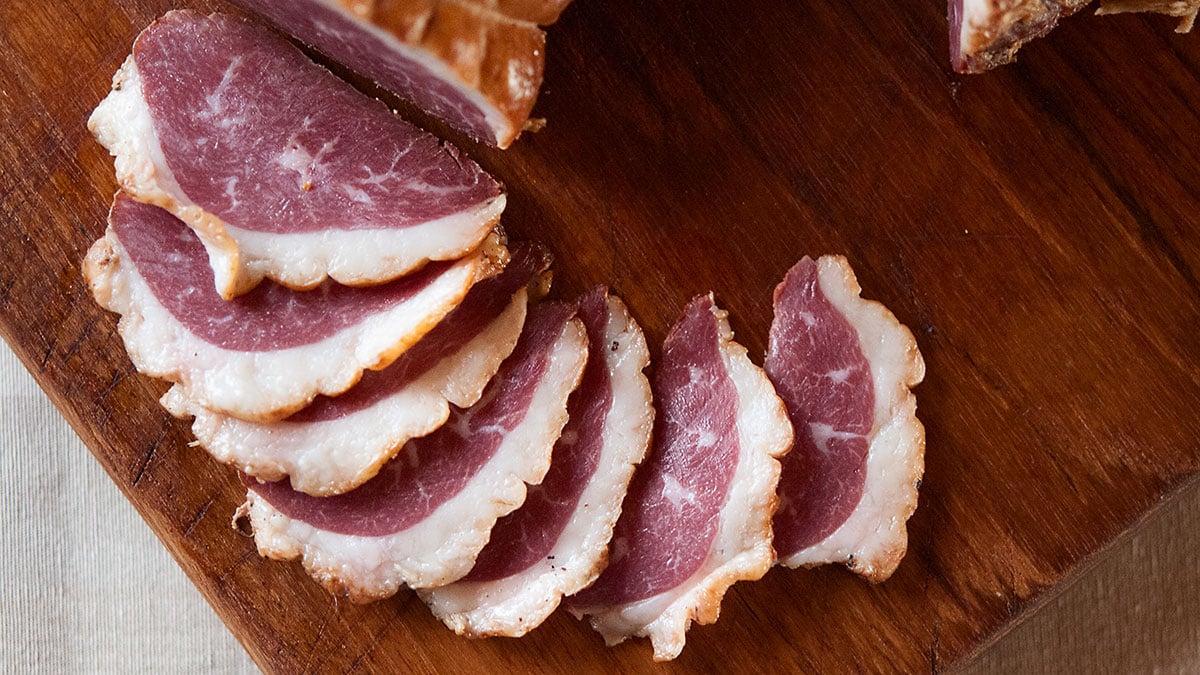
As for the legs, they are a slow cooker meat with few equals. Start here for goose leg options. Any recipe you can think of where you slow cook meat, shred it, and use it in a dish will work with goose legs. If you need a place to start, you could do worse than this barbacoa recipe.
Keep in mind that I have a whole ton of duck and goose recipes on this site, and every new season I refine old recipes and add new ones.
What’s the takeaway? For hunters, know that there are all sorts of things you can do to cook goose that you might not have thought of before; they have advantages — largely size — that let you do some things you can’t with other waterfowl.

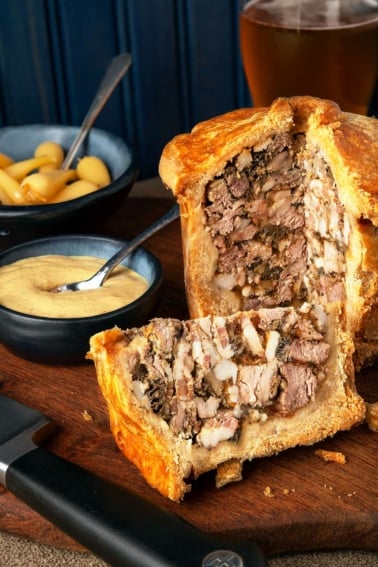
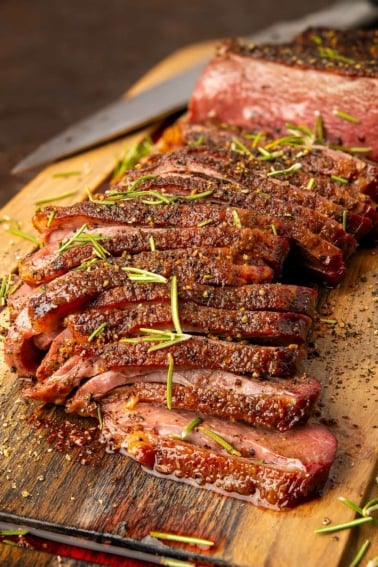
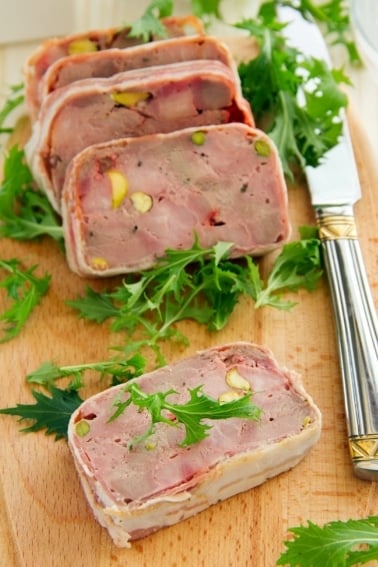
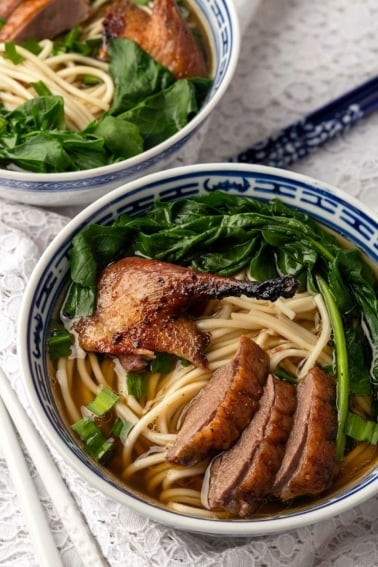
okay, we are very new to farming geese. we have 3 brown Chinese that are about 6 months. 2 are males, and so I need to take 1 male to freezer camp. my cousin whom is a big game hunter told me he’ll show me how but he said the breast will be the only thing worth eating. I wonder if thats because he’s use to eating wild goose. I was wanting to roast it whole for Thanksgiving. thoughts?
Tashma: No, geese are good to eat all around, not just the breast. Your cousin is misinformed. You can definitely roast a whole goose for Thanksgiving. I have a method that works very well with domestic geese over on the website Simply Recipes.
Great article. When I was living in Colombia, lo these many years ago, a wonderful woman taught me how to pluck domestic fowl without paraffin, or blanching in boiling water (my grandmother’s trick). She took a darning needle and thrust it in the mouth, up and into the brain cavity. ( Oh, by the way, the bird has passed on…..) She then scrambled the brain a bit with the needle and removed the needle. And the feathers just flew off with gentle tugging. I have done it with chicken, Guinea fowl and duck with great success.
I believe the private Roman Catholic College I attended, (it had a Canadian Goose “problem,”) fed me Canadian Goose breast in the form of a “beef cheesesteak” hoagie.
After reading about the similarities of cattle beef & Canadian Goose breast…it wouldn’t surprise me.
TO CUT COSTS OF COURSE!
Jim
I always cooked Canada goose as follows: skin and filet (breast, leg and thigh, first wing joint); marinate in olive oil, sesame oil and (a good deal of) crushed garlic for several hours before grilling in a Weber Kettle with coals banked on the sides. I would brown the meat over the coals, then finish in the middle to 125 – 130 degrees for breasts, perhaps slightly more for the lighter meat. Slice thin (Hey folks, it’s not the most tender meat out there). It was always received with enthusiasm. We found it (as noted above) to have the general character of beef, but with considerably more (pleasantly) intense flavor.
I would freeze the meat in a solid block of ice and found meat frozen such was little degraded even after 5 years or so.
iam going to make a cajun snapping turtle soup from the skinned goose breast halves that I have . cooked and mince the meat and add to a soup . I’ve tried all the other ways I think this will be good
So, I have been eating Canada Geese from the sea (and some diving ducks too) and I just want to say — they’re delicious. Now, I probably have a very broad palate, and I’m nutritionally, economically and ecologically motivated to enjoy a variety of foods… I’m not saying I’m right. But just thought folks should know that there are those out there with an open mind and open mouth who enjoy the ‘fishy’ birds. and they aren’t fishy. (to my taste).
I love to read your stuff, and rarely feel a need to comment. I would offer two points of view for you to consider. 1. A good brine, beyond salt/sugar/pepper that is thoughtfully simmered for 20 minutes, cooled and then used for a two day soak, solves most “diet” choices the animal has made. 2. A goose, when cooked to its taste profile (curry marinades, citrus-based sauces, teriyaki-based devils on horseback, and/or apple based 225 degree smokes) brings out the very best in what geese offer (i.e. don’t cook it like a chicken).
Got my first Canada goose so I now have a reason to reread ‘duck duck goose’. Thanks again great info!
Also, “The Ribeye of the Sky” is widely known by most hunters as the Sandhill Crane, not of any goose. Perhaps where you live, your local culture has adopted a different tradition. Either way, the Sandhill Crane would be an interesting waterfowl to sous vide – especially if it truly is the original Ribeye of the Sky….
Thanks for your article. It is truly wonderful.
Hank: Yep, sandhills definitely have that name. We can’t hunt them here, and I happen to think the ribeye in the sky is a better moniker for spacks because of their fat. After all, part of what makes a great ribeye is that fat!
Hank,
Can I just use my duck sous vide method for the Canada goose? Leave the skin on, slice the skin, salt both sides, and add thyme/herbs etc.. Submerge for 1-2 hours at 135F. Then sear skin side for 5 minutes and flip and sear for 1 minute. It comes out so fantastic for duck. Why 182F for 20 minutes for goose? Wouldn’t a lower temp at a longer duration work well too? I just want to be safe for cooking such a big breast meat portion of the bird.
Thanks
Steve
Steve: OK, that’s just weird. I have no idea why its says 182F in that post. Your method is correct. I’m going to go back and change it now. Thanks for the catch!
Hank,
When you are breasting out a Canada, do you pull the wishbone out like we do when roasting a whole chicken?
Walter: Nope.
In the early goose season I shot one that landed in the middle of the lake I was hunting on. We couldn’t get to it for about an hour. Do you think this is still good to eat? Since it was in the water for so long I didn’t age the meat.
Ryan: Should be fine, especially if you cooled it later.
I’ve eaten many Canada geese and only a few have been “fishy”. I find in the summer they can be as tough as a shoe (as a farmer, I have had a depredation permit in the past). However, in the fall after fattening up on local corn fields, they are very tasty. Previously I’ve breasted them, marinated a bit and then grilled them. Folks often think its flank steak! Next one is going to give up the neck and become a sausage. Thanks SO MUCH for sharing that. PS: Already put your fauna and fowl books on the Christmas list thanks to the goodness you’ve shared here.
Ok I just got back from a remote backpacking trip in the Sierra and I shot a Canada goose it wasn’t a huge one so we just harvested the breasts and pan fried them. Tasted like a used bandaid soaked in a fishy swamp. Is this due the goose’s diet or not aging it all? BTW it was head shot with a .22 and then allowed to bleed out.
John: Um… you said you shot a Canada goose in July? That’s a federal crime.
Does the shot not cause issues when aging?
I saw the a la ficelle cooking method in action years ago at Old Sturbridge Village. A reenactor in one of the houses was roasting a whole turkey. She had a small fire going in a huge hearth, with the turkey suspended from a string over a pan. She’d twist the string every so often, and the turkey would twirl around in front of the fire. It looked really good, and very easy to do (assuming you happen to have one of those big hearths).
Wow! I stumbled upon your site while searching goose recipes. Thank you for such a resource. Very important information for those that appreciate the earth’s natural bounty. Cheers!
Re: Canada neck cleanup
I tried, I tried a lot! but I gave up – do you have a special technique to cleanup the necks ? the necks has tiny, little feathers, and they seem to be impossible to pluck dry, did you share your technique on the neck plucking ?
Well, cleaning 2 took me like 2+ hours. They were the 18lbs kind, HUGE.
https://picasaweb.google.com/102567527316483554268/201211090NakedCanadaGoose?authkey=Gv1sRgCIr8gda7v9SGwgE
I just smoked one and I felt it was a bit tough, I did not age them at all and I have the feeling it was a mistake not too since I did marinade them for almost 5 days!
I am glad I found our site, keep up the good work and Merry Christmas!